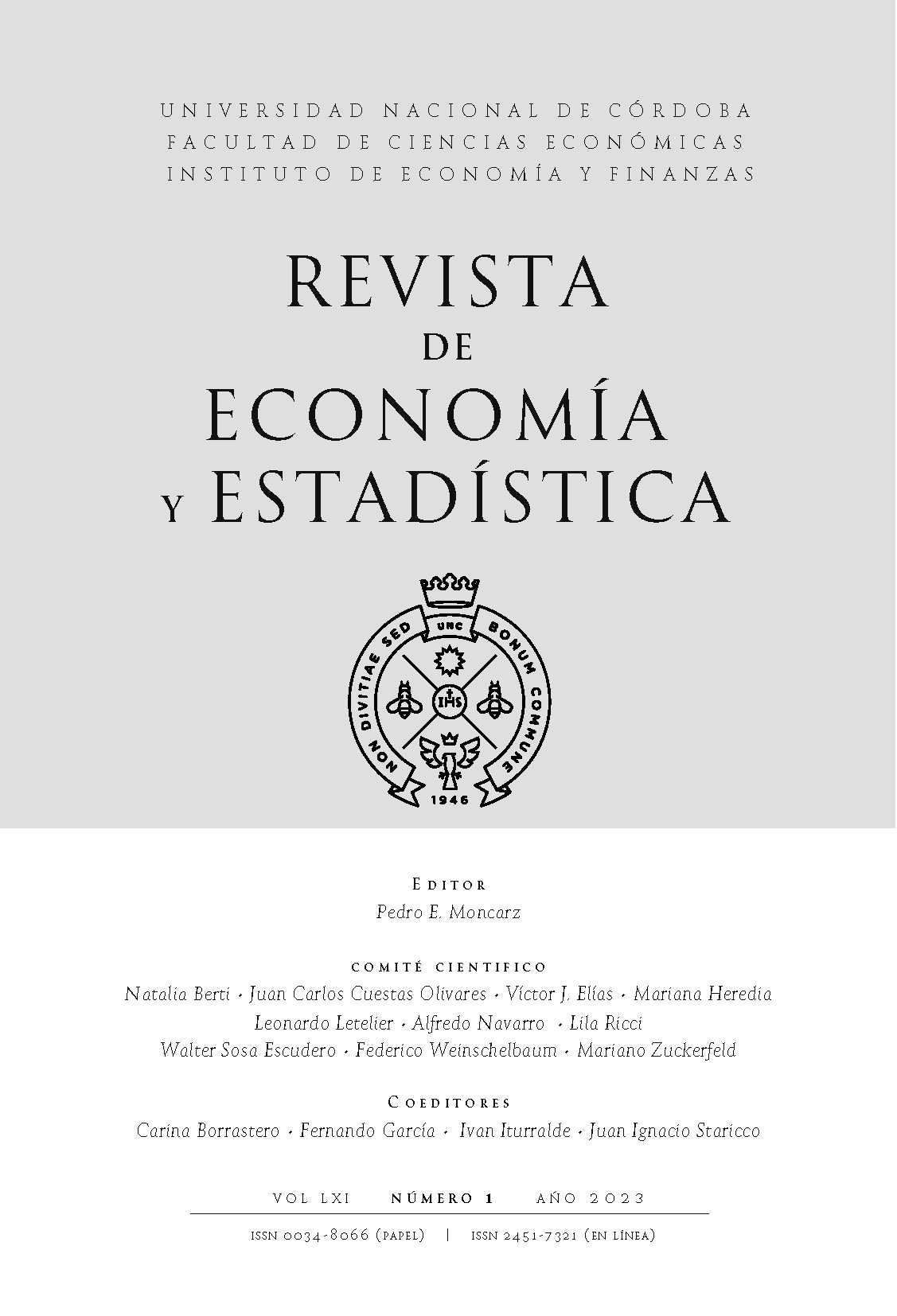A pillar 0 for Uruguay's social security system
DOI:
https://doi.org/10.55444/2451.7321.2023.v61.n1.44192Keywords:
Social security, Pension system, Pensions, Pillar 0Abstract
In May 2023, the Uruguayan government enacted Law 20.130 reforming the Uruguayan pension system. Title VII, on "Minimum levels of protection", provides for significant changes in what is usually referred to as "pillar 0" of social protection. In this paper, I share some ideas about pillar 0 that I presented to the Commission of Experts on Social Security (CESS), created by Law 19.889 of 2020. I propose the creation of a universal income for older adults residing in the country, inspired by similar programs in other countries, such as Canada's Guaranteed Income Supplement (GIS), Sweden's Pension Guarantee and Chile's Solidarity Pension. These ideas were one input, among many others, into the drafting of the CESS proposals and later the reform law.
This article has been published at the invitation of the Journal's Editorial Team.
Downloads
References
Alvarez, I.; da Silva, N.; Forteza, A. & Rossi, I. (2010). ¿Qué incentivos al retiro genera la seguridad social? El caso uruguayo. Cuadernos de Economía, 47, 217-247
Bene, Nicolás (2021). Densidad de cotización al BPS. CESS, Nota técnica No 5.
Bucheli, M.; Forteza, A. & Rossi, I. (2010). Work history and the access to contributory pensions. The case of Uruguay. Journal of Pension Economics and Finance, 2010, 9, 369-391
Forteza, A.; Lucchetti, L. & Pallares-Miralles, M. (2009). Measuring the Coverage Gap, en: Holzmann, R.; Robalino, D. A. & Takayama, N. (Eds.) Closing the Coverage Gap. The Role of Social Pensions and Other Retirement Income Transfers., The World Bank.
Forteza, A.; Apella, I.; Fajnzylber, E.; Grushka, C. O.; Rossi, I. & Sanroman, G. (2011). Contributions to Social Security in Argentina, Chile and Uruguay: Densities, Transitions and Duration. Económica, LVII, 127-163
Forteza, A. y Rossi, I. (2013). NDC vs NDB for Infrequent Contributors. IN: Holzmann, R.; Palmer, E. & Robalino, D. A. (Eds.): Nonfinancial Defined Contribution Pension Schemes in a Changing Pension World, The World Bank, 2013, 2, 147-174
Friedman, Milton (1962). Capitalism and Freedom. The University of Chicago Press.
Gill, I.; Packard, T. & Yermo, J. (2005). El futuro de la seguridad social en America Latina. The World Bank.
Gruber, J. & Wise, D. A. (Eds.) (2004). Social Security Programs and Retirement Around the World. Micro-Estimation. The University of Chicago Press.
Holzmann, R.; Packard, T. & Cuesta, J. (2000). Extending Coverage in Multi-Pillar Pension Systems: Constraints and Hypotheses, Preliminary Evidence and Future Research Agenda. Social Protection Discussion Papers and Notes 21303, The World Bank.
Holzmann, R. & Hinz, R. (2005). Old Age Income Support in the 21st Century: an International Perspective on Pension Systems and Reform. The World Bank.
Holzmann, R.; Robalino, D. A. & Takayama, N. (Eds.) (2009). Closing the Coverage Gap. The Role of Social Pensions and Other Retirement Income Transfers. The World Bank.
Lavalleja, M.; Rossi, I. & Tenembaum, V. (2018). La flexibilización de las condiciones de acceso a las jubilaciones en el Uruguay. Serie Estudios y Perspectivas. Oficina de la CEPAL Montevideo.
Packard, T.; Shinkai, N. & Fuentes, R. (2003). The Reach of Social Security in Latin America and the Caribbean. The World Bank.
Rofman, R. & Oliveri, M. L. (2011). La cobertura de los sistemas previsionales en América Latina: conceptos e indicadores. The World Bank.
Parijs, P. (1995). Real Freedom for All: What (if anything) can justify capitalism? Clarendon Press, Oxford.
Viñales, Gustavo (2021). Análisis y fundamentación general, diseño tentativo, estimación preliminar de los costos y posibles modos de financiamiento, de una renta universal en la vejez. Informe de consultoría para UNFPA.
Zunino, G.; Caporale, F.; Pereira, M. & Souto, A. (2020). Densidad de Cotizaciones, Historias Laborales y Rendimientos Jubilatorios en el Sistema de Seguridad Social de Uruguay Cinve.
Downloads
Published
Issue
Section
License
Copyright (c) 2023 Álvaro Forteza

This work is licensed under a Creative Commons Attribution-NonCommercial-NoDerivatives 4.0 International License.
Authors who have publications with this journal agree to the following terms:
Authors retain their copyright and grant the journal the right of first publication of their work, which is simultaneously subject to the Creative Commons Attribution-NonCommercial-NoDerivatives 4.0 International License that allows third parties to share the work provided that its author and first publication in this journal are indicated.
Authors may adopt other non-exclusive licensing arrangements for distribution of the published version of the work (e.g. depositing it in an institutional telematic archive or publishing it in a monographic volume) as long as the initial publication in this journal is indicated.
Authors are allowed and encouraged to disseminate their work via the Internet (e.g. in institutional telematic archives or on their website) before and during the submission process, which can lead to interesting exchanges and increase citations of the published work. (See The Open Access Effect)










